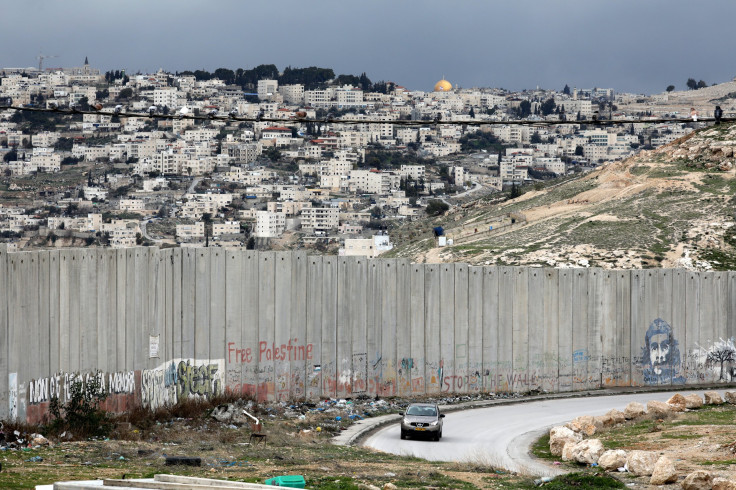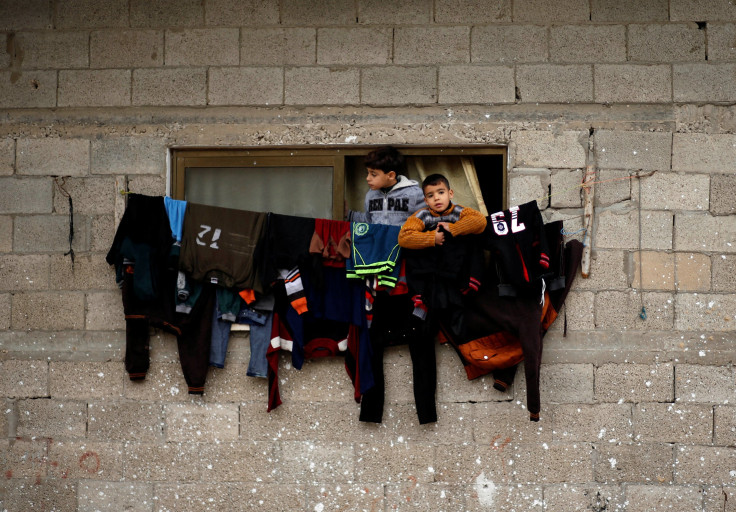Israel-Palestine Conflict: What Is The Two-State Solution? All You Need To Know About The Commitment Trump Just Went Back On

A day after President Donald Trump abandoned the United States’ two decades-long commitment to creating a Palestinian state next to Israel, the U.S. Ambassador to the United Nations Nikki Haley maintained that the country is in absolute support of the two-state solution to the Israeli-Palestine conflict.
“First of all, the two-state solution is what we support. Anybody that wants to say the United States does not support the two-state solution – that would be an error,” Haley told reporters at the U.N. headquarters in New York.
The comments come soon after President Trump used his joint appearance with Israeli Prime Minister Benjamin Netanyahu to cast a shadow of doubt over the same commitment. He said: “I’m looking at two-state and one-state, and I like the one that both parties like. I’m very happy with the one that both parties like,” adding, “I can live with either one.”
However, Haley explained Trump’s comments by saying: “We absolutely support the two-state solution, but we are thinking out of the box as well.”
The questions that arise here are — what is the two-state solution and what are the alternatives to this approach for peace in the Middle East?
What is the root of the conflict?
The Israel-Palestine conflict, at the basic level, is the dispute over division of territory in the region. The British, after seizing Palestine from the Ottomans, issued the Balfour Declaration in 1917, which essentially gave support for a “national home for the Jewish people” within Palestine without harming the other communities in the region.
The Jewish state of Israel was established in 1948 but the United Nations recommended that Palestine be divided into two states. Israel was not happy with this solution and after a war, ended up seizing almost 50 percent more land than was mandated under the U.N. plan. Over half of the Palestinians living in this region were forced to flee from their homes, giving rise to one of the biggest refugee crises in the world.

Following the Six Day War in 1967, Israel expanded its territory even beyond these borders despite agreeing to United Nations Resolution 242, which called for the withdrawal of the Israeli armed forces. The country has since continued to support settlement building activity in the West Bank and other regions, despite widespread international criticism. The Palestinians, on the other hand, have been criticized for the allegedly favoring violence and armed resistance instead of looking for political solutions.
What is the two-state solution?
The “two-state solution” calls for the creation of two independent states to resolve the conflict. It is based on the premise that both sides wish to govern themselves differently. The Israelis want a Jewish state, which the others want a Palestinian one.
This solution would lead to the setting up of a Palestinian state alongside Israel, which will allow the latter to retain its Jewish identity in a democratic manner. It is backed by most governments and international bodies including the U.S., the U.N., Israel and the Palestinian Authority.
Its implementation, however, has met many hurdles. First is the demarcation of borders in light of Israel’s increased development of settlements in regions claimed by the Palestinians as part of their future state. Another issue is the status of Jerusalem, which is claimed by both sides as their capital. In addition to these, the question of refugees as well as the defense of both parties has been a cause of concern.
What are the alternatives?
The other option is merging Israel, the West Bank, and the Gaza Strip into one big country. This has two possible variations. A single democratic country in which the Jews may be outnumbered by the Palestinians, or annexation of the West Bank by Israel that may force the Palestinians out, or subject them to a loss of rights. The latter is widely rejected as it would be a violation of human rights.
Both options will cause Israel to lose one of the two core values — its Jewish identity and democracy.
Many suggest that the most likely choice in the region may be the maintenance of status quo, especially because of the increase in Palestinian disillusionment with the two-state solution and Netanyahu’s expansion of West Bank settlements.
Israel is currently recognized by 162 nations, while the State of Palestine is recognized by 136, which does not include the U.S.
© Copyright IBTimes 2025. All rights reserved.





















